- Home
- B. V. Larson
Planetary Assault (Star Force Series) Page 2
Planetary Assault (Star Force Series) Read online
Page 2
Mule’s spine tingled. Mothership Slovakia was eight days from Tyche and due to begin braking maneuvers in six. Perhaps they would finally get some answers.
From the speaker, Captain Han cleared his throat. “Crew, Space Marines, I have solemn news to report. We have spotted five enemy missiles headed our way. They originated from a region between Tyche and us. At present velocities, the missiles are seven days out. We must assume the possibility that they will increase acceleration and shorten the time to contact with us.”
“It wasn’t supposed to work like that,” Hayes complained. “We’ve spent three painful years sneaking up on them. Damn that faulty fusion core.”
Mule nodded. The cyborgs must have seen the blast after all.
“Space Marines,” the captain said. “You will report to the hanger bays in twenty minutes, as there has been a change in operational plans. That is all.”
***
Mule sat with a couple hundred Marines packed onto Hanger Deck C. Around him squatted bruisers with thick necks, bristling hair and bulging triceps. Most had aggressive-looking tattoos of predatory animals or harsh sayings printed in block letters, and every one of them wore green tee shirts that showed their ripped bodies.
His fellow Marines squatted or sat, cracking their knuckles, scratching itches and watching the briefing officer with their hate-shining eyes. Mention cyborgs and these warriors started snarling. Several pumped meaty fists into the air. Others shouted vicious slogans laced with curses and mayhem-filled promises.
The tall briefing officer with his hologram clicker grinned back at the Marines, but Mule could feel the man’s discomfort. The officer twitched too much and he checked his chronometer far too often. That was the wrong way to act here.
Mule understood the Navy slug’s discomfort. It must be like standing in a cage with man-eating tigers watching him. The Marines hungrily absorbed his words, their thick necks craning, showing the muscles and the heavy veins. The battle-lust shining on their faces caused some to inch closer to the officer.
The reason for the posthypnotic conditioning was clear to Mule. Hate the enemy so you didn’t fear him. If you feared, you hesitated, and hesitating against a meld was certain death. Cyborgs fought with insectile speed. To see one fully, you had to wait until it stopped or moved with exaggerated slowness. And they were strong as well. Cyborgs had graphite-powered bones, synthetic muscles and armored bodies. They could punch through bulkheads and rip a man in two. Even with injections of Dense and an accelerated weightlifting schedule, a man was no match in strength, nor would he ever be as fast as a cyborg. Marines had to rely on teamwork, discipline and firepower to beat their cybernetic enemies.
With the click of his thumb, the briefing officer changed the holo image.
A round object appeared in the air. It was a holo image of Tyche. Two thousand and fifty-three kilometers in diameter, it was a rocky planetoid with lots of methane ice on the surface. There had been an ancient theory that suggested Tyche would prove to be a gas giant in the Oort Cloud. The theory had been wrong.
“The captain has used the ship’s telescopes,” the Navy slug told them. “So far, he has been unable to find any Lurkers. We have, however, found this.”
The briefing officer clicked his device and a new holo image appeared. It showed a vast exhaust port many tens of kilometers wide for a drive engine. The thing was built into the planetoid, a gargantuan construct. The Neptunians might have built it, but it seemed more likely the cyborgs had done so.
Throughout the war, the cyborgs had used several operational strategies. One of their favorite had been raining asteroids on targeted planets or moons. To achieve the proper velocity with their billion-ton missiles, the cyborgs had built mammoth fusion engines into their asteroids. If they had also built the port, there must be more cyborgs here than expected.
“We’re uncertain what the cyborgs hope to achieve with such a monstrous moving planetoid,” the briefing officer said. “Some of our scientists believe the melds will conform to their normal strategies. That means they will attempt to turn the planetoid into a huge invasion platform, perhaps to take out the sunbeam. Tyche is far enough out to build up a high velocity before the sunbeam could strike it with annihilating power. Still, much of Tyche is composed of methane ice, and the sunbeam could quickly burn it down to the core. We suspect most of the cyborg habitats are buried in the ice. Such a burn-off would destroy the living quarters.
“Other scientists disagree with the majority view. The cyborgs are rational and logical, they say. The melds have lost the war and have no desire to die in an illogical blaze of glory. But if they aren’t building Tyche as an attack platform, to gather their last soldiers in one final assault, what are they doing? A minority group of scientists believes the planetoid could act as a giant generational vessel, able to support hundreds of thousands of individuals as it crossed interstellar space to a new star system. That would mean the cyborgs are escaping our system, perhaps to begin the war anew in some distant future.
“The truth is that we don’t know what they plan to do with the planetoid,” the briefing officer continued. “Whatever their objective, we’re here to stop them. In several hours, the captain will launch the assault torpedoes. We’re doing that before the cyborg missiles reach this mothership. There are two good reasons for that. One, if Slovakia is destroyed, you Marines will still be able to complete the mission. Two, without the torpedoes attached to the mothership, Slovakia will be more maneuverable and more likely to survive the enemy attack. Are there any questions before I begin the tactical objectives?”
Surprisingly, there were none. Like Mule, the Marines were ready to fight.
The briefing officer nodded, clicked the device and began to outline objectives.
-3-
Launch hour arrived. Slovakia was six days out from Tyche. Eight days if one counted the hard braking that needed to occur for the mothership to land on the planetoid.
While thinking about it, Mule donned his powered armor. Five cyborg missiles accelerated for Slovakia. The mothership bored in toward Tyche. Those missiles hadn’t lifted from the icy surface. According to the briefing officer, they had been drifting in space like proximity mines.
Whether the five missiles had radar-alerted fuses or cyborg fingers pushing buttons didn’t matter. The five big missiles had announced their presence by the long fusion tails reaching far behind them, by accelerating at the mothership.
The enemy missiles homed in on Slovakia. Therefore it was time to launch the Marines before the next cyborg move announced itself.
There were many possible ways to place troops onto a planetoid surface. The cyborgs liked using black-ice coated projectiles, making them nearly radar-invisible and teleoptic-proof. A more common way was by using dropships to deploy suited Marines, or by simply landing on the surface in shuttles and disembarking. Slovakia’s captain had ordered use of torpedoes.
Mule and his squad-mates donned powered armor. These represented the latest development in Marine hardware, very similar to the best Highborn suits.
The battlesuit’s exoskeleton amplified a wearer’s strength, while biphase carbide plates with shock-absorbing padding protected the Marine inside. Its helmet had an integral sensor visor and holographic HUD. Computers assisted with targeting and other functions. The suit was airtight and pressurized for vacuum.
These battlesuits also had chameleon systems to change color to match the background. As a further advantage, the chameleon systems dampened heat and infrared signatures.
Each of them carried gyroc smart rifles. The rifle fired a .75 caliber, spin-stabilized rocket. Against cyborgs, they used Armor Piercing Exploding, APEX, rounds. The smart rounds were actually tiny guided missiles, able to make course corrections to stay on target. Each squad also had a heavy weapon, a tripod-mounted flamer. It fired superhot plasma, a short-range blast that killed whatever it hit, with no exceptions.
“How many days are we going to be in the torped
oes again?” Hayes asked Chen.
“Load up with plenty of vids and other entertainment,” Chen said. “It will be at least six days before we touch down.”
Mule wore a slick-suit inside the powered armor. It helped keep him at a comfortable temperature.
His squad had five Marines, including their leader, Sergeant Chen. Mule was the squad sniper and scout. His suit was faster and not quite as heavily armored as the others’ were. His chameleon systems were much more extensive, though, so his battlesuit ended up weighing the same as the others.
Early on, armorers had individually fitted each suit to the wearer. Six or more days inside one of these meant it was going to get rank and scratchy. There were stims, Quake and slowdown drugs in the suit’s integral med-kit. There was extra ammo, replacement battery packs and recyclers. It made for a bulky load.
Now an armorer helped Mule secure his helmet. His breath bounced back against his face, causing a momentary feeling of claustrophobia. To break his funk, Mule began testing systems, turning on each of the suit’s computers in sequence. Ten minutes later, he confirmed everything was in order. So did the others of their squad.
“Follow me,” a Navy lieutenant said.
The man had just come from officer country. He wore the new Navy blues of the Alliance Fleet. Mule felt like an overfed gorilla as he clanked after the lieutenant. He dwarfed the man, and if he wanted, Mule could have twisted the lieutenant in two.
Just like a cyborg could do to us.
His suit’s motors were set on ultra-low power and they moved through a narrow steel corridor. The lieutenant opened a hatch, and Mule’s gut crawled with emotions.
The squad had often practiced outside Slovakia’s hull, in space. The mothership even towed a gunnery cage, and Mule had used it many times to drill. This was different. This might be the last time he ever walked the corridors of Slovakia.
The lieutenant pushed through the hatch and floated down a flexible tube. Mule switched off magnetic power to his boots, pushed and floated after the man. He could see the stars outside, and by peering just right, he saw their destination—a Phoenix assault torpedo.
The core of the mothership was rather small, as such things went. It contained life-support and crew quarters. Everything else was outside Slovakia. On racks, it carried the Phoenix torpedoes and Electron drones. The mothership lacked the particle shields—asteroid-like rock—that battleships and strike cruisers kept in front of them. Instead, Slovakia depended on keeping its distance from the fight and if needed, spraying lead-laced gels and prismatic crystals before it.
Mule didn’t know how gels or crystals were going to stop the five missiles. The captain would have to use the laser or fire anti-missile rockets. But those were big missiles headed this way, each one a quarter the size of Slovakia. Who knew what defensive systems each enemy missile possessed?
The mothership was like a giant spider web, with the egg sac in the center, the life-support areas. Instead of cocooned flies and other bugs, the web held torpedoes and drone missiles.
The lieutenant opened another hatch. He then led them into their torpedo, a small, cramped chamber.
“It’s cold in here,” the lieutenant said.
Mule’s outer suit sensors picked up his words. The sensors also told him it was forty-one degrees in the chamber.
The Phoenix had a big bulbous head. Most of that was plate armor and ECM equipment. The rest held crew space and firing tubes.
Mule watched as the lieutenant began to open smaller hatches. The hatches were embedded on a bulkhead in a half-moon arrangement. The hatches led to five pod beds.
“In you go,” the lieutenant announced in much too cheery a voice.
For a moment, none of the Marines moved.
Mule found that interesting. Even with hate-conditioning—
“The sooner you go in,” the lieutenant told them, “the sooner you’ll get to kill cyborgs.”
“Right,” Chen said. “Hop in, boys.”
Four Marines pushed headfirst into four different pod hatches. Above each hatch was stenciled a name.
“Sub-sergeant,” the lieutenant said to Mule. “Don’t you want to kill cyborgs?”
The Navy slug peered at him with a smirk on his narrow face. Of course, he was using the conditioning, trying to hurry them along through bloodlust.
Mule had never trusted the hate-conditioning. As a scout and sniper, he didn’t have the posthypnotic commands embedded in him. He feared the conditioning would make the others too rash in battle. Even less, he didn’t like this Navy officer using the conditioning against his friends. A man should own his hate, not have it foisted upon him.
“How about I shove you into my hole?” Mule asked.
The Navy officer blinked rapidly, with surprise.
Mule lifted his arms and took a step toward the man. It brought a smile to his lips, because the manipulative slug flinched away. The lieutenant actually blanched white when his back hit the bulkhead.
“Don’t you want to kill cyborgs?” Mule asked.
The lieutenant opened his mouth, but he didn’t seem able to speak.
“We’ve traveled three years to do this,” Mule said. “The least you can do is give us a little respect.”
The Navy slug nodded, and he wasn’t smirking anymore. In fact, he was frightened, maybe getting ready to crap his nice clean pants.
Mule shrugged, causing his exoskeleton motor to purr with power.
“Have a good life, sir,” Mule said. Then he, too, went headfirst into his hatch. It became dark and he heard a clang. The lieutenant must have closed his hatch first.
The five hatches led to five pod beds. Each of the beds would cocoon the person in it. At the right time, the torpedo would fire each Marine through its nosecone in a special insertion pod toward Tyche’s surface. The torpedo was like a flying shotgun and the Marine pods were the shells.
Mule found his pod, lay in it and began hooking cables to the outer ports in the suit. The cables would supply him with food, air and warmth, and dispose of his wastes. He made himself comfortable and opened comm-channels with the others.
“Are you in, Sub-sergeant?” Chen asked.
“Tight as a bug,” Mule said.
“It’s about time we got started,” the sergeant said.
It took some time, but finally Mule heard faint, metallic clangs. Those must be the locks that held the torpedo onto its rack releasing. Afterward came a tumbling motion, which told Mule the cables holding the Phoenix had detached. They were on their own now, adrift in space.
Because of what the briefing officer had told them, Mule a good idea of the game plan. Slovakia would detach almost all of its torpedoes and drones. Actually, it detached all the Phoenix torpedoes and kept several drones behind.
Several of the torpedoes would act as decoys. The mothership had carried extras in case some malfunctioned before the battle date. The idea was to drop off each torpedo and expel it farther away from the mothership in a lateral direction, using magnetic impulse. In layman’s terms, Slovakia magnetically repelled each torpedo and drone away from it at a varying angle.
Once the mothership braked, the many torpedoes and drones would continue at the original velocity. They would all seemingly leap ahead of Slovakia, but they would do so without giving themselves away through fusion-burn signatures.
Those would come later, days later, when the torpedoes and drones approached Tyche. For now, the captain hoped to work his silent torpedoes and drones as close to Tyche’s surface as he could.
Inside the torpedo, Mule took a deep breath and tried to control his shakes. That he had them at all was a surprise. He wanted to attack, wanted to kill. So why did he shake?
“I’m going to watch a movie,” Chen said. “I suggest the rest of you try to relax.”
I don’t get this. Why am I shaking? The cyborgs had spotted Slovakia too far out. Maybe his subconscious mind was worried about that. Maybe it thought the pod would become his coffin. Did t
he posthypnotic conditioning in the others actually have a real use?
“How are you feeling, Sarge?” Mule asked.
“You know what?” Chen said. “I’m excited. Yeah, I’m anxious to rip some cyborgs heads off their torsos.”
“You can hardly wait?”
“Yeah,” Chen said. “It’s like a game of Fist-Ball, a championship match. I’m ready. We’re all ready. Are you ready, Mule?”
“I live for danger.”
The others chuckled at his words.
“The cyborgs are probably pissing oil right now,” Chen said. “We’re the Space Marines. We’re the best there is. We have the latest tech and we’re full of Quake. If I could feel sorry for them freaks, I would. Instead, I’m going to enjoy shooting their eyes out. They shine orange, I hear. Did you ever hear that?”
“Yeah,” Mule said. He thought about the cyborg who had stared at his wife and kids.
“The pupils are colored orange cause of the circuits in their skull,” Chen said. “Thinking about that makes me want to puke. I hate them, Mule. I want to stomp them like the bugs they are.”
“Good.”
It went on like that for a long time. Eventually, Mule cut the link with Chen and the others, still pumping themselves up. He brought up the torpedo’s outer cameras and watched the stars. They were alone in the night, headed for Tyche, waiting to blast out of the nosecone and begin the pod assault. He could hardly wait, and he found that the shakes had stopped.
-4-
Day 1094: Mule awoke with a shout as a klaxon rang in his ears.
“What’s going on?” Chen asked through the comm-link.
Mule squeezed his eyes shut, and with delicate patience, he eased his right arm out of the battlesuit’s sleeve. He managed to work his hand under the collar and use his index finger to rub his itchy eyes.
“Mule, do you hear me?”
“Loud and clear, Sarge,” Mule said. “What’s up?”

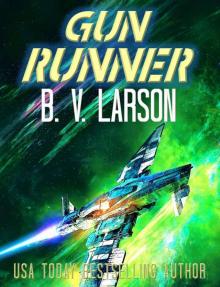 Gun Runner
Gun Runner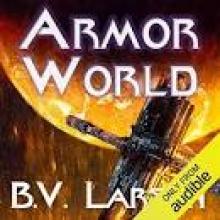 Armor World
Armor World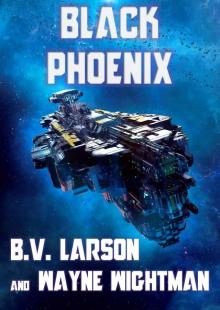 Black Phoenix
Black Phoenix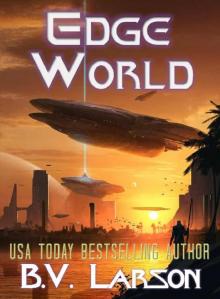 Edge World (Undying Mercenaries Series Book 14)
Edge World (Undying Mercenaries Series Book 14) Hell's Reach (Galactic Liberation Series Book 6)
Hell's Reach (Galactic Liberation Series Book 6)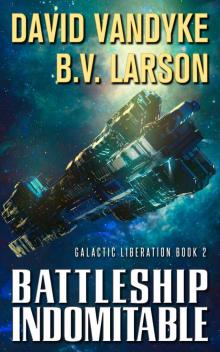 Battleship Indomitable
Battleship Indomitable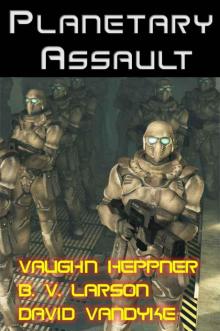 Planetary Assault (Star Force Series)
Planetary Assault (Star Force Series) Flagship Victory (Galactic Liberation Book 3)
Flagship Victory (Galactic Liberation Book 3) Star Carrier (Lost Colonies Trilogy Book 3)
Star Carrier (Lost Colonies Trilogy Book 3)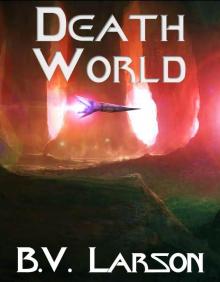 Death World (Undying Mercenaries Series Book 5)
Death World (Undying Mercenaries Series Book 5)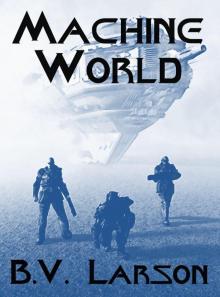 Machine World (Undying Mercenaries Book 4)
Machine World (Undying Mercenaries Book 4) Mech 2
Mech 2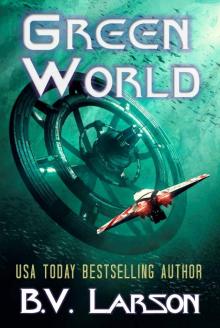 Green World
Green World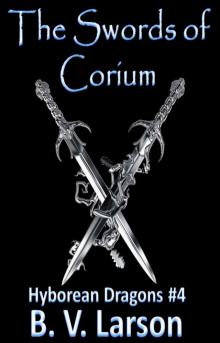 The Swords of Corium
The Swords of Corium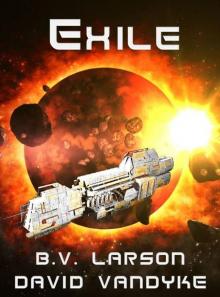 Star Force 11: Exile
Star Force 11: Exile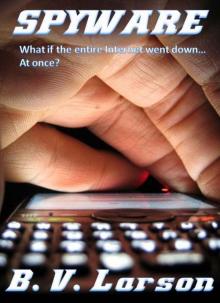 SPYWARE BOOK
SPYWARE BOOK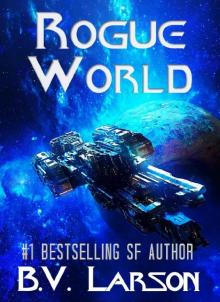 Rogue World (Undying Mercenaries Series Book 7)
Rogue World (Undying Mercenaries Series Book 7)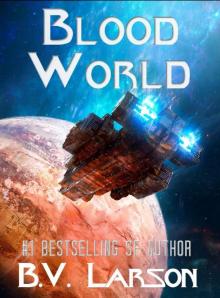 Blood World (Undying Mercenaries Series Book 8)
Blood World (Undying Mercenaries Series Book 8) Demon Star
Demon Star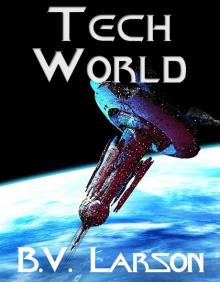 Tech World (Undying Mercenaries Series)
Tech World (Undying Mercenaries Series)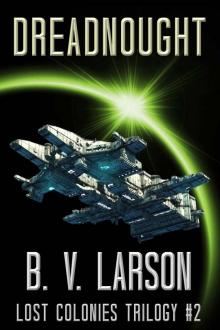 Dreadnought (Lost Colonies Trilogy Book 2)
Dreadnought (Lost Colonies Trilogy Book 2) Shifting
Shifting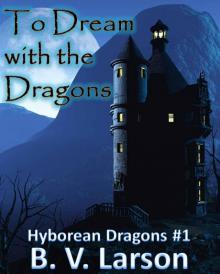 To Dream with the Dragons (Hyborean Dragons)
To Dream with the Dragons (Hyborean Dragons)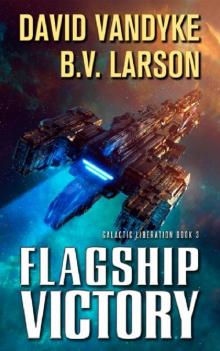 Flagship Victory
Flagship Victory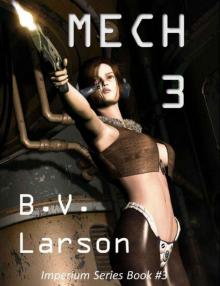 Mech 3: The Empress
Mech 3: The Empress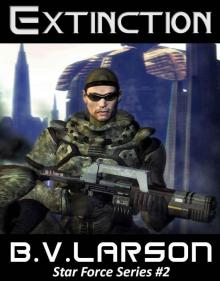 Extinction Ebook Full
Extinction Ebook Full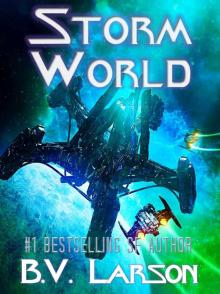 Storm World (Undying Mercenaries Series Book 10)
Storm World (Undying Mercenaries Series Book 10)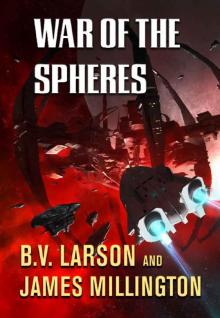 War of the Spheres
War of the Spheres MECH EBOOK
MECH EBOOK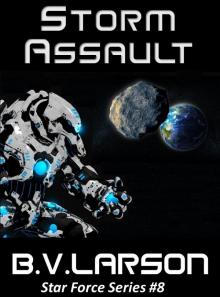 Storm Assault (Star Force Series)
Storm Assault (Star Force Series)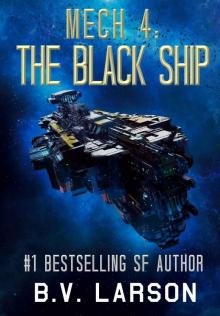 Mech 4: The Black Ship (Imperium Series Book 5)
Mech 4: The Black Ship (Imperium Series Book 5)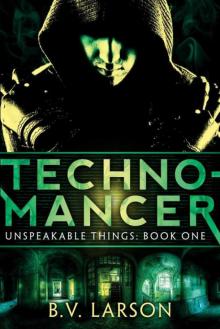 Technomancer
Technomancer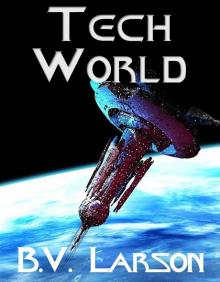 Tech World
Tech World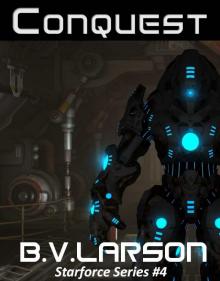 Conquest (Star Force Series)
Conquest (Star Force Series)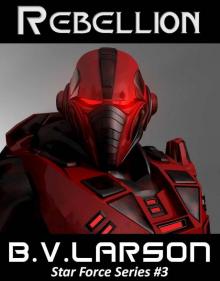 Rebellion sf-3
Rebellion sf-3 Dust World
Dust World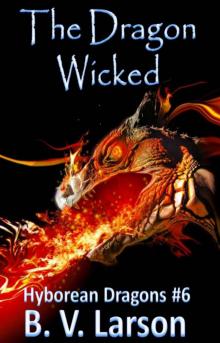 The Dragon Wicked
The Dragon Wicked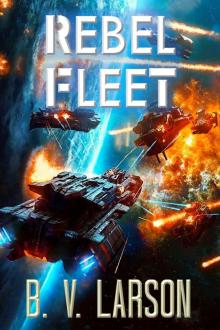 Rebel Fleet
Rebel Fleet Alpha Fleet (Rebel Fleet Series Book 3)
Alpha Fleet (Rebel Fleet Series Book 3)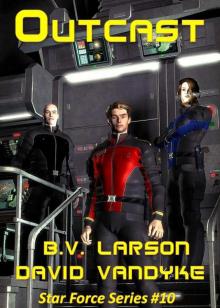 Star Force 10: Outcast
Star Force 10: Outcast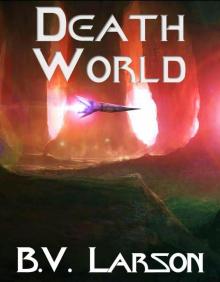 Death World
Death World Mech Zero: The Dominant
Mech Zero: The Dominant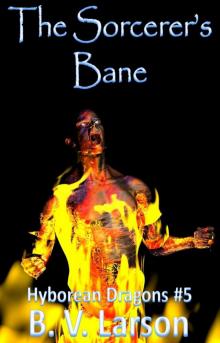 The Sorcerer's Bane
The Sorcerer's Bane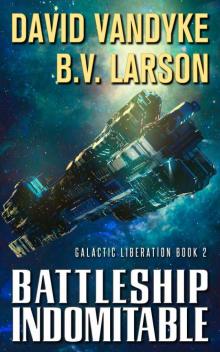 Battleship Indomitable (Galactic Liberation Book 2)
Battleship Indomitable (Galactic Liberation Book 2) Haven Magic
Haven Magic Amber Magic (Haven Series #1)
Amber Magic (Haven Series #1)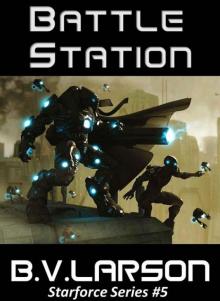 Battle Station sf-5
Battle Station sf-5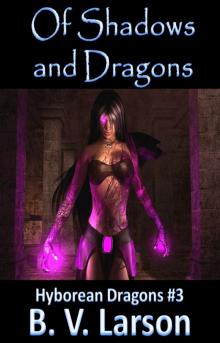 Of Shadows and Dragons
Of Shadows and Dragons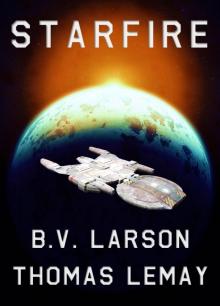 Starfire
Starfire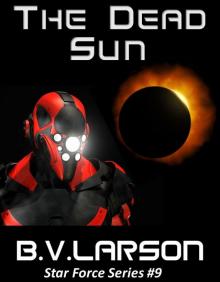 The Dead Sun (Star Force Series)
The Dead Sun (Star Force Series) Home World (Undying Mercenaries Series Book 6)
Home World (Undying Mercenaries Series Book 6) Star Force 12 Demon Star
Star Force 12 Demon Star Dream Magic
Dream Magic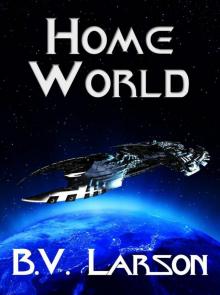 Home World
Home World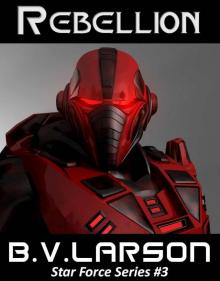 Rebellion Ebook Full
Rebellion Ebook Full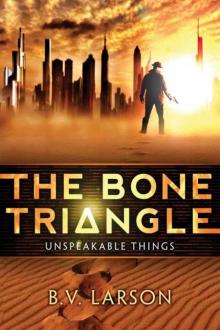 The Bone Triangle
The Bone Triangle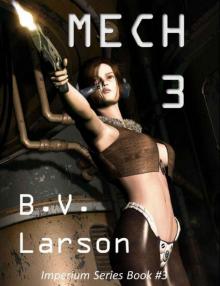 The Empress i-3
The Empress i-3 Annihilation (Star Force Series)
Annihilation (Star Force Series) Undying Mercenaries 2: Dust World
Undying Mercenaries 2: Dust World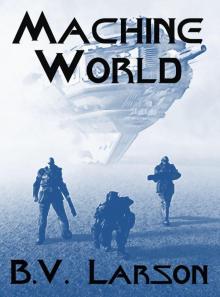 Machine World
Machine World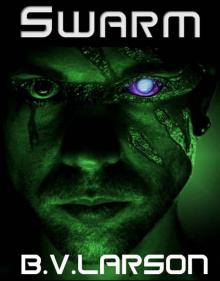 Swarm
Swarm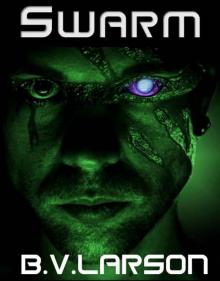 Swarm sf-1
Swarm sf-1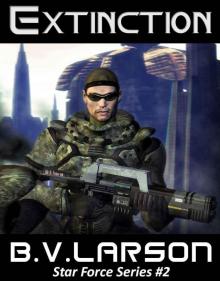 Extinction sf-2
Extinction sf-2 Amber Magic h-1
Amber Magic h-1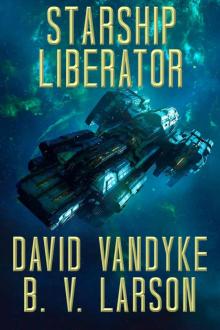 Starship Liberator
Starship Liberator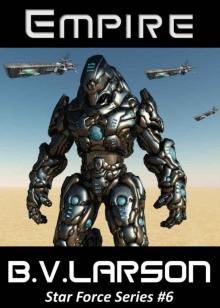 Empire Ebook Full
Empire Ebook Full The Dragon-Child
The Dragon-Child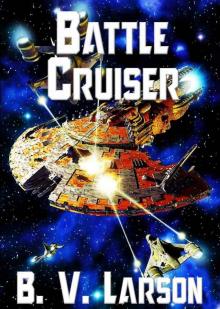 Battle Cruiser
Battle Cruiser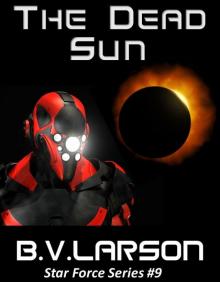 The Dead Sun
The Dead Sun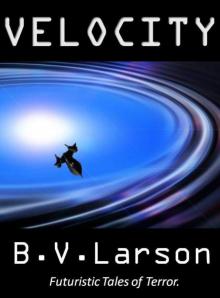 Velocity
Velocity Creatures
Creatures Orion Fleet (Rebel Fleet Series Book 2)
Orion Fleet (Rebel Fleet Series Book 2)